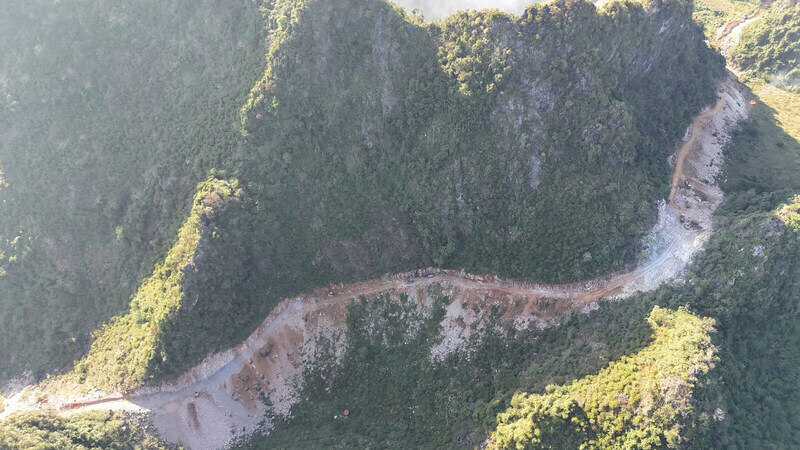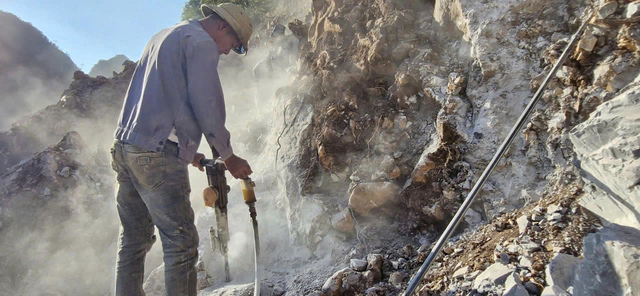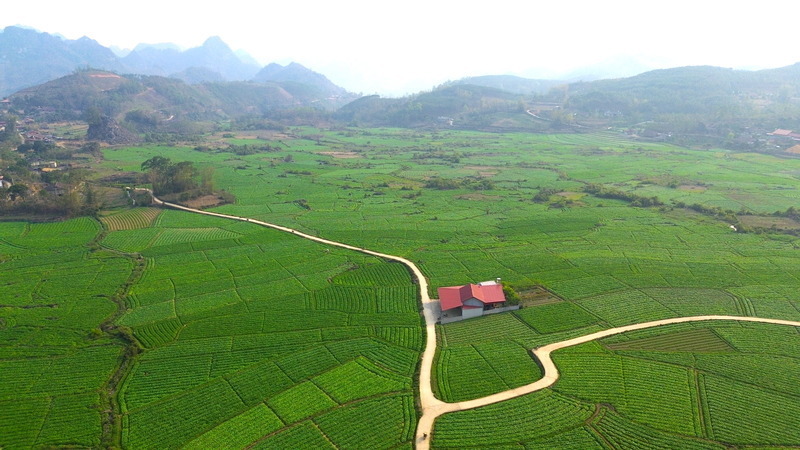Shortening 1/3 of the distance, creating a breakthrough in agricultural products
The Chi Lang - Y Tich route is nearly 8km long, of which more than 5km must be constructed through the rugged rocky mountain terrain.
This is one of the key traffic routes that helps connect mountainous communes such as Y Tich, Van Linh, Bang Huu, Bang Mac with the center of Dong Mo town and Chi Lang commune - the largest gathering, purchasing and consumption of agricultural products in the district.
Talking to reporters, Mr. Mai Viet Lao - Chairman of the People's Committee of Y Tich commune - said that Y Tich commune is currently about 21km from the district center.
However, due to the lack of a smooth route, people are forced to go around National Highway 279 with a distance of up to 36km whenever they want to bring vegetables, tubers, fruits or nuts to Chi Lang town for consumption.

Age prices in Y Tich are often lower due to high transportation costs. Medical examination, treatment, and travel of people have also been limited for many years. When the Chi Lang - Y Tich route is completed, the distance from the commune center to the district center will be shortened by about 1/3, goods circulation will be more convenient, prices will be more stable," Mr. Lao emphasized.
Not only serving production, the road also helps connect Y Tich commune with neighboring communes such as Van Linh, Bang Huu, Bang Mac, Hoa Binh, creating a comprehensive traffic network, serving both the people's goals and regional economic development.
"The road has now basically taken shape, people can now travel, only a few sections in Chi Lang are stuck in site clearance and construction, these problems are being resolved for the road to be completed," Mr. Lao added.

According to the assessment, this project is one of the most unique and complex projects in Chi Lang.
The leader of the Traffic Infrastructure Construction and Maintenance Management Board of Lang Son province said that most of the construction work is rock breaking and blasting.
"The characteristic of the route is that the inside has to wait for the roadbed to be opened from the outside. The contractor cannot construct simultaneously, causing delays. But as the old saying goes, the hardships are the rich. The units have agreed to divide each section into small sections and deploy many items in parallel," said the investor representative.
To speed up, contractors have mobilized the maximum amount of stone drilling machinery, a team of skilled workers and blasting equipment to tarpaul the mountain and open the road. Every day, every meter of roadbed is formed in the sound of an explosive and the sweat of a craftsman, clinging to the rocky mountain.

Currently, the project has basically completed the foundation and road surface, and is entering the technical completion stage. It is expected that the Chi Lang - Y Tich route will officially open to traffic at the end of 2025, on schedule.
According to the representative of the Management Board, the route not only has traffic value but also opens up opportunities for restructuring and developing communes after the pass, especially after the time of administrative unit arrangement.
New route - a new look for the Lang Son area
Talking with reporters, Mr. Luong Thanh Chung - Vice Chairman of Chi Lang District People's Committee said that currently, in the district, there are 2,600 hectares, of which 2,400-2,500 hectares have yielded fruit, earning 800 billion VND/year.
In particular, the 7 communes "back to the pass" are areas with large areas of seaweed cultivation with quality recognized and favored by consumers.

"Not only that, tobacco is also a type of tree to escape poverty here. The opening of the Chi Lang - Y Tich route is also opening up a new future, new opportunities for people in the mountainous areas," the leader informed.
From the dirt road, muddy rainy season and dusty sunny season, Y Tich people are about to receive a modern concrete road through the rocky mountains.
Not only does it shorten the gap, it also breaks the isolation of the most isolated growing region in the North, where each crop attracts thousands of tons to the national market.











